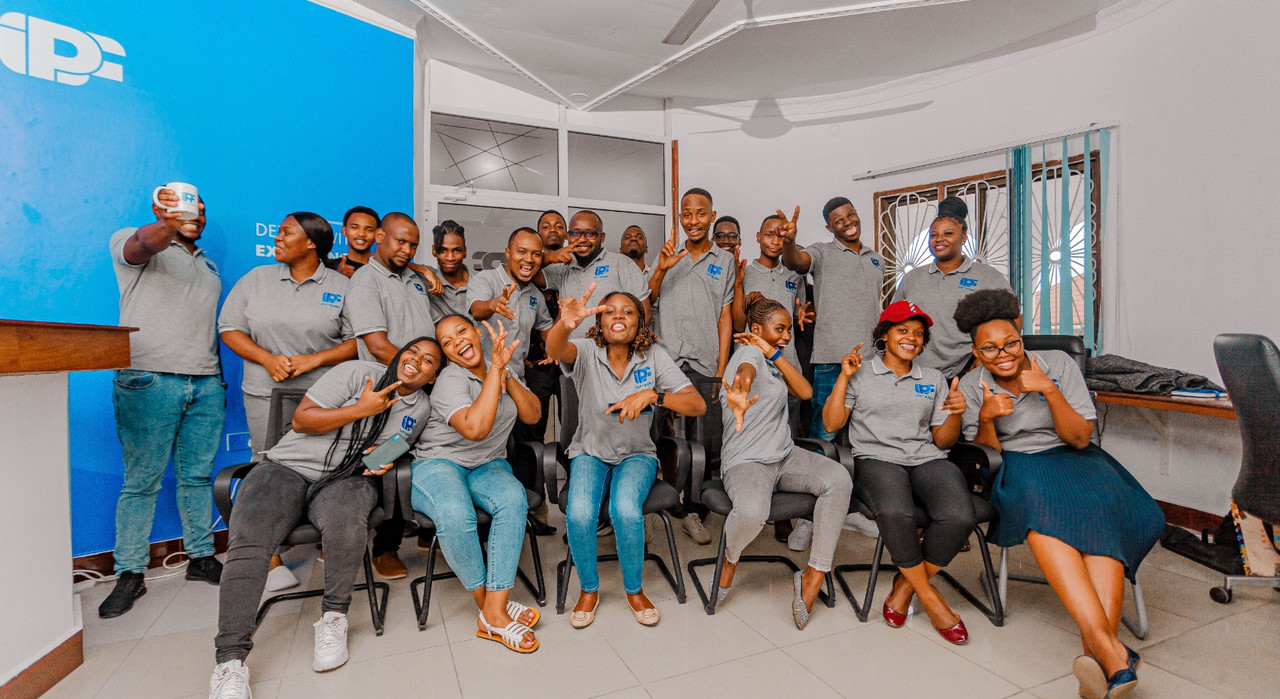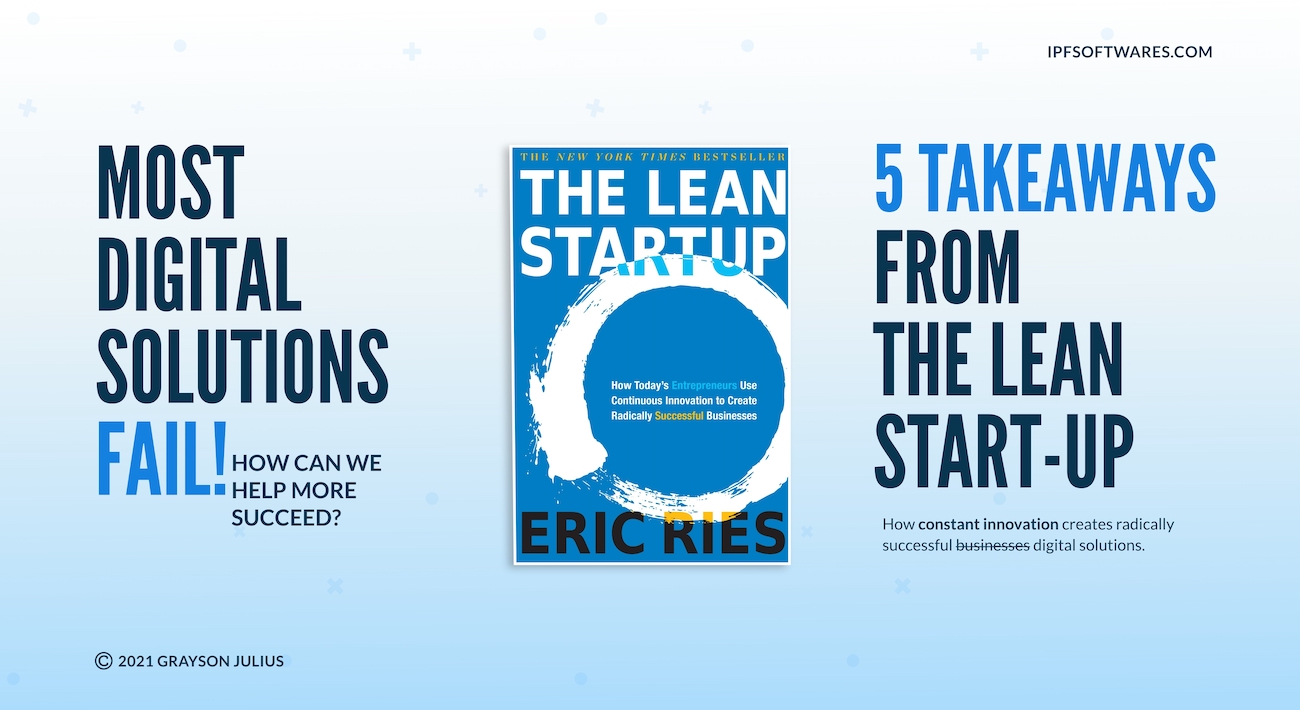Experience tells us that 75% of local software products fail, and a major cause is surprisingly the approach taken to develop products.
We often equate software with the software engineers who create it.
Poor software = Bad engineers
However, here is the fact, when it comes to impactful digital solutions, it takes a team of experts; technical and non technical working together in order to develop a software product that delivers real value in the market.
Today, at iPF Softwares we leverage our records of around 10 years of experience in custom software development, to bring you the exploration and key learnings we've gained.
At the forefront let’s start by making this clear ,
“The success of any custom software development project is influenced and shaped by the culture and context of the people and organizations involved.”
We will come back to this after we go through our well established and guided approach to custom software development.
We call it “The iPF Softwares Way”.
By definition this is how we approach our custom software development projects and with this approach we have delivered a series of successful projects.
This is how we do it, first let us take a look at stages involved
- Ideation & Discovery
- Domain Research
- Solution Design & Prototyping
- Solution Engineering
- User Acceptance Testing
- Product Release
Discovery & Ideation
In a common practical scenario, before developing a product, stakeholders come together to brainstorm on the idea of the product.
In most cases teams will brainstorm based on what they know and maybe , spot out 2 or 3 problems they will be solving with the product.
However if the stakeholders do not have enough information usually they will come up with the wrong solution.
During ideation and discovery, the approaches differ.
Some over simplify it more of like a one time come together and think of the solution and implement.
However,ideation and discovery is so important that it is supposed to take 80% of the efforts and 20%, the implementation phase for a software product to become successful.
Here this out, product ideation has a framework to follow.
This is how we do it,
Keep in mind that “The main focus here is to understand users needs”
We create user personas and understand each person's needs and behavior.
This means rather than thinking on top of our heads and coming up with solutions, an actual research through interview and observation is conducted.
Working with the value proposition canvas
Having a value proposition canvas as a guiding tool
For each persona in the scenario we identify this aspects:
What they trying to accomplish - Customer Jobs
Let's say if the issue on the table is trying to connect “ employers to good job candidates”Then here we have 2 personas
The employer and employee each with different need
While an employer is seeking for suitable candidates
A job applicant is trying to get a job by sending applications.
The customer jobs can be as simple as these yet if they are not identified properly you land on a wrong product.
Then comes another aspect
What is the pain they go through when trying to get their jobs done-Pains
Again in a common scenario, an employer will receive a lot of applications to scan and figure out the suitable candidates.
On the other hand, the job applicant is trying to get his or her skills noticed through tens of applicants.
Another aspect to look at
Is what makes these personas happy, what are they looking forward to-Gains
For an employer to get a suitable candidate for the job and for a job applicant is to land the job of his dream.
So having at least explored fully the personas , it becomes easier to develop a product that is completely meant for them .
This is the best part for a value proposition canvas.
So as we brainstorm on the product features we certainly will be able to identify those with great value to the users (personas).
For the pains-we will have pain relievers
For example: For an employer we could think of having an automated candidate filter based on his or her preferences. For candidates we could think of having a standard cv building guide
For the gain we will have gain creators
What do they get using our solution?
I:e for an employer, he/she gets a fast and efficient cv screening process
A candidate gets to get his /her cv across .
As you can see thinking of a solution with this approach makes sure we are always thinking about the end user and it even get us out of the comfort zone to go and interact with the targeted end users through interview and observations
To learn more about Ideation & Discovery using Value Proposition Canvas you can checkout our CaseStudy : Tunzaa: From Idea To An Impactful Fintech solution.
Or watch the youtube video below.
Defining the project scope
During ideation and discovery, that is when you identify what your systems need to have and what it doesn’t need.Therefore defining the scope of what you need to work on.
Domain Research
Having a well developed idea is one step but in order to design a solution that users will really use.
You need to develop the specific industry knowledge and experience your solution is tailored to.This is called domain knowledge.
This implies that in order to develop a real solution targeting end users you really need to figure out how to extract as much information as possible from them, in order to develop an actual picture on what they are really facing.
The trick is on how? We leave this to you to think about!
A domain knowledge can be simply defined as a practical experience in the field, the terms used , the trends or the languages .
We even go deeper into researching the similar solutions that they are missing and that you can offer.
Another thing is to Understand the key business processes and workflows within the industry.
This can be done by mapping out the user journey, identifying pain points, and analyzing how software can be used to improve efficiency.
Again getting familiar with the industry-specific terminology and concepts. Helps you communicate effectively with stakeholders and understand their needs better.
This phase can take us back to ideation & discovery to rethink again on our solution.
Solution Design & Prototyping
User Interface and Experience ( UI/UX ) Design:
The first noticed part of any digital solution is its interface and we never miss a chance to deliver it with a WoW factor.
Digital solutions with clean and intuitive user interfaces that are easy to use have a great chance to win the market.
“People ignore the design that ignores people”—Frank Chimero
A better UI/UX is built with a user in mind,
These are the basic questions that we first consider while developing UI/UX Design
- How can we collect user feedback from actual users during the design process?
- How is the UI/UX of competing products in the market?
- What elements of their design have been successful, and how are we incorporating or innovating upon them?
On a technical side among other many things these are things we consider
Responsiveness, Accessibility, Load time, Error handling, Consistency and
Lastly the iterative design ; A user-centered design methodologies, allowing for continuous improvement based on user feedback.
Database Design:
Digital solutions must be able to scale and adapt, hence while designing a database architecture you should consider how the solution will scale and adapt to handle massive amounts of data efficiently, ensuring searches and secure transactions.
A well-structured database schema, optimized indexing, and data partitioning strategies makes it possible a digital solution to make data transactions smoothly.
Software Architecture:
Modern digital solutions must be able to handle scalability, fault tolerance, and rapid deployment of new features.
There are different approaches to this however what is most important is any software architecture should be strategic in a way that it can support a high-performance, reliable and user-centric application.
While designing a software architecture, here are the things to think about
- How do you ensure that the software design is scalable and maintainable?
- How to achieve better performance, security, and reliability?
- How do you account for fault tolerance, disaster and recovery?
- What are the industry best practices, standards, and compliance requirements?
Learn more about Software System Architecture: A Guide to Understanding Interactions Between Digital Solution Components
Solution engineering
In the software development and engineering phase the approach is key.
It is possible to have better designs but get off track during the actual implementation
.
Therefore during solution engineering, there must be a methodology or a suitable approach for implementing the design.
There so many out there depending on the needs of the project however
Agile software development methodology is particularly effective, especially for longer projects.
Agile is not just a methodology; it's a mindset ; an iterative approach where products evolve in increments, typically over two-week periods.
Its flexibility in accommodating project changes and relies on feedback, rendering it ideal for today's fast-paced and ever-evolving software market.
Moreover, Agile isn't a one-size-fits-all approach. It offers various frameworks tailored to suit the unique needs of each project.
With Agile, stakeholders get to be part of the process. They can see how things are coming along at every stage.
We believe this is more beneficial as it is possible to pivot earlier when there is a change in business or market.
This adaptability is what makes Agile truly fascinating, it defines how development teams, product owners, and even end-users seamlessly integrate to ensure the end product delivers value.
Whish to learn more about Agile Software Development ? Check out this article Agile Software Development here.
User Acceptance Testing (UAT)
UAT in software development is the final phase where end users test the software in real-world conditions to assess its functionality and usability.
During UAT, beta testers interact with the software to ensure it meets their needs and works effectively within their specific business environment.
The focus is on verifying that the software can function as intended in real-world scenarios, rather than just assessing its appearance or desired features.
Feedback from UAT helps developers identify and resolve any issues before the software is rolled out for general use, ensuring that it meets user requirements and expectations.
Successful completion of UAT indicates that the software is ready for deployment and use by the broader user community.
Since this phase is the product gate to the world the most important questions here that must be answered accurately is
- How can stakeholders ensure that UAT tests accurately reflect the user base?
Product Release
This is it, the moment we all work towards - where imagination becomes a reality. This what happens next…
Deployment and Launch: This is when the product reaches the public. This is the moment to gauge user interest and gather real-world feedback.
Post-Release Monitoring and Support: The journey doesn't end at launch. Continuous monitoring and support will be needed.
Improvement of the Product: Feedback from users is used to improve the product continuously. Any successful product is built to evolve in order to keep up with competition.
Conclusion
Now going back to “The success of any custom software development project is influenced and shaped by the culture and context of the people and organizations involved.”
The iPF Softwares Way to custom software development encompasses everything to this:
Communication: A strong culture that values open communication helps team members understand project goals, user needs, and expectations. This reduces misunderstandings and ensures everyone is working towards the same vision.
Collaboration: A collaborative culture encourages team members to share ideas, identify potential issues, and work together towards solutions. This is essential for navigating the inevitable challenges that arise during development.
Adaptability: A culture that embraces change allows teams to adapt to unforeseen circumstances and incorporate new technologies and approaches. This is especially important in today's fast-paced software development landscape.
Understanding User Needs: A team that understands the user's needs and the industry context can build software that is truly useful and solves real problems.
At iPF Softwares, we've taken our extensive experience and crafted a reliable, practical approach to custom software development.
This approach, when followed diligently, has a strong track record of success for our clients.
We're confident in our ability to deliver solutions that meet your needs because we prioritize: speed, collaboration and consistency and our approach is designed to maximize your chances of a successful outcome.
Looking for a Technology Partner ? Contact us today.





